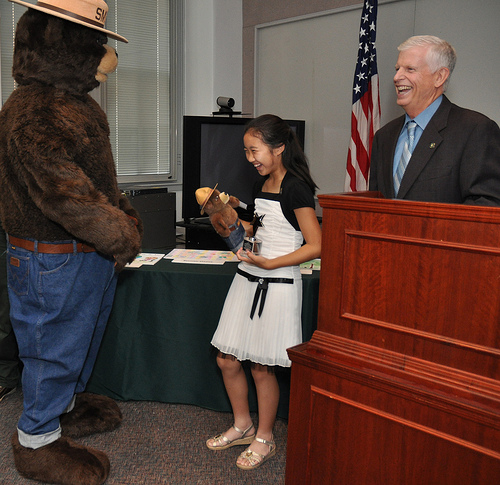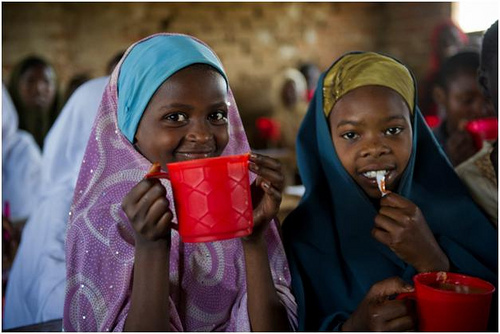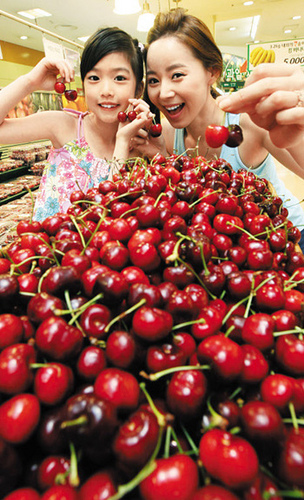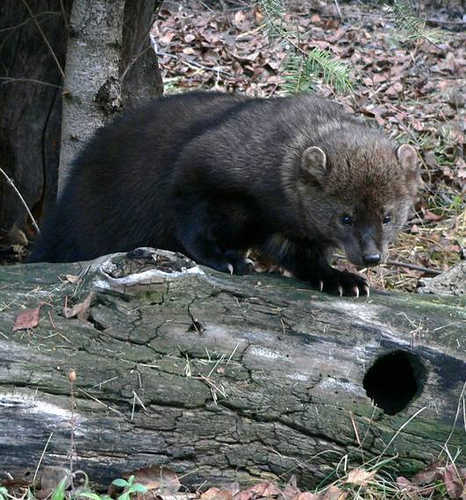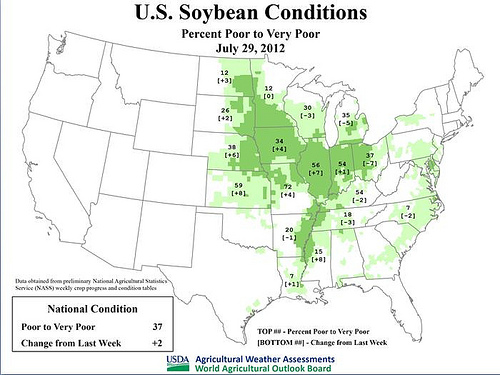
Agricultural Weather Assessment - U.S. Soybean Conditions as of July 29, 2012. Click to enlarge image.
Visit www.usda.gov/drought for the latest information regarding USDA’s Drought Disaster response and assistance.
Based on weather developments last week (July 22-28), U.S. corn and soybean conditions further declined in today’s USDA/NASS crop condition report. The most significant crop deterioration occurred across the southern and western Corn Belt, where little or no rainfall accompanied temperatures that averaged 5 to 10°F above normal. Multiple days of triple-digit (100°F) heat were noted last week in parts of Indiana, Illinois, Iowa, Missouri, Arkansas, and on the Great Plains from South Dakota to Texas. In contrast, there was enough rain (locally 1 to 2 inches or more) across the northern Corn Belt, mainly from the Dakotas to Michigan and Ohio, to help stabilize crop conditions in some fields. Parts of central and eastern Iowa also received highly beneficial rainfall in excess of an inch.
U.S. soybeans, rated 37% very poor to poor on July 29, 2012, have matched lowest conditions observed during the Drought of 1988. That year, soybeans rated very poor to poor peaked at 37% on July 10, with a secondary peak of 35% on August 21. Nearly half (48%) of the U.S. corn was rated very poor to poor on July 29, 2012. In 1988, corn rated very poor to poor peaked at 53% on August 21.
Weather Outlook: During the next five days, no appreciable drought relief can be expected across the hardest-hit drought areas of the Plains, Mid-South, or Midwest, although rainfall in isolated locations may exceed an inch. Significant rainfall (1 to 3 inches, with locally higher amounts) will be confined to the Southwest and the Southeast. The northern Corn Belt will continue to experience scattered showers and a reprieve from hot weather, but excessively hot conditions will prevail for the remainder of the week across the central and southern Plains, the Mid-South, and parts of the southern Corn Belt. In some of the hottest areas across the south-central U.S., high temperatures will continue to approach 110°F. Late in the week, cooler air will arrive across the northern Plains.
Watch USDA meteorologist Brad Rippey discuss the current agricultural weather outlook on USDA’s YouTube channel.
